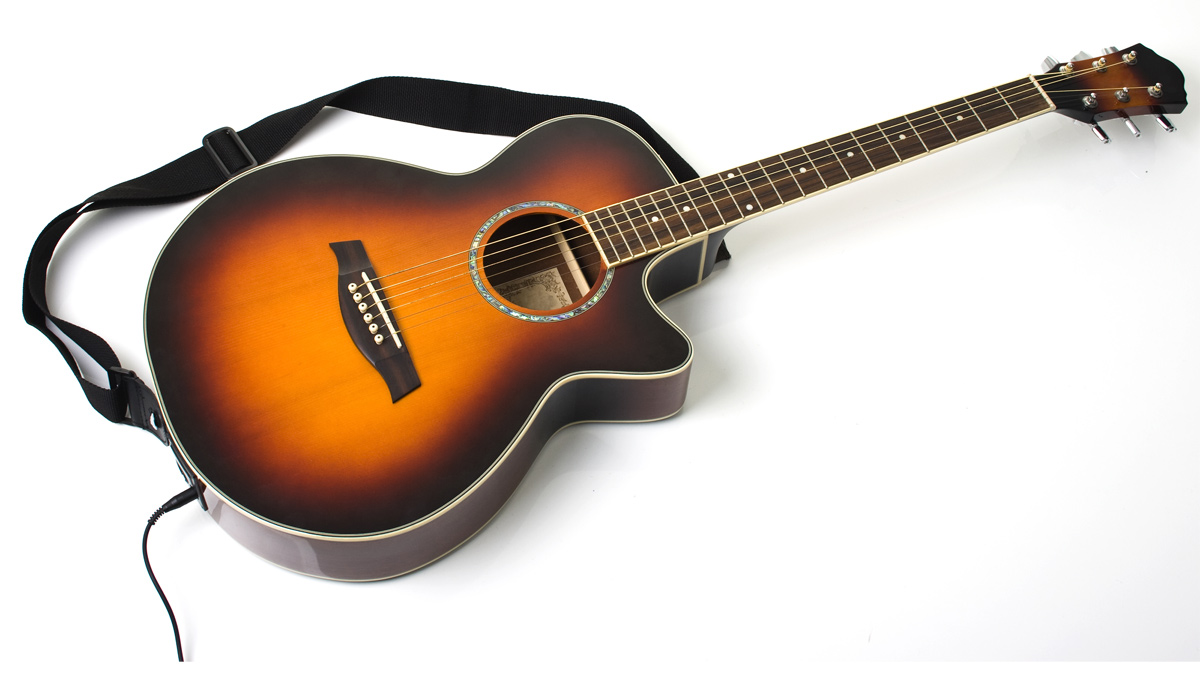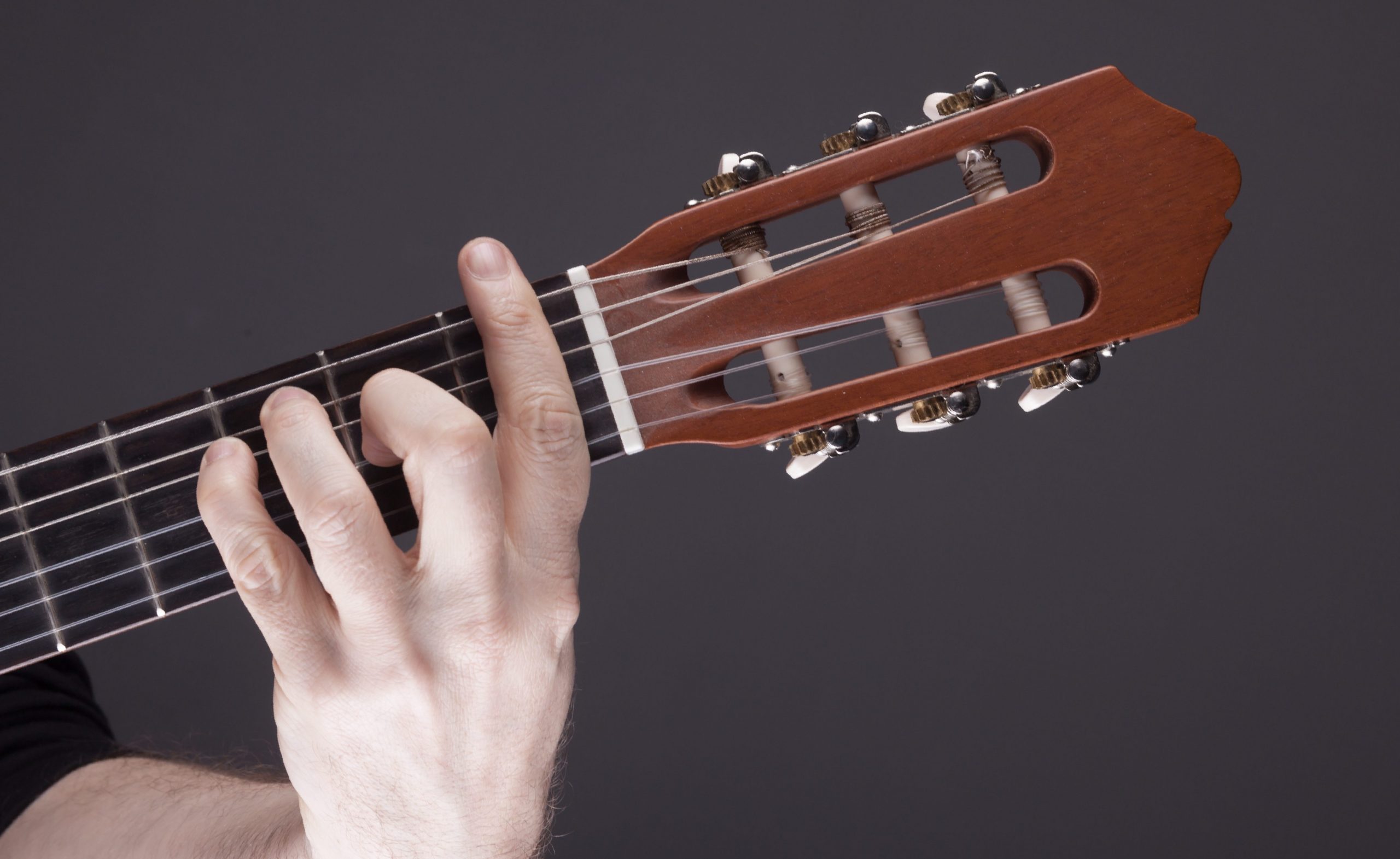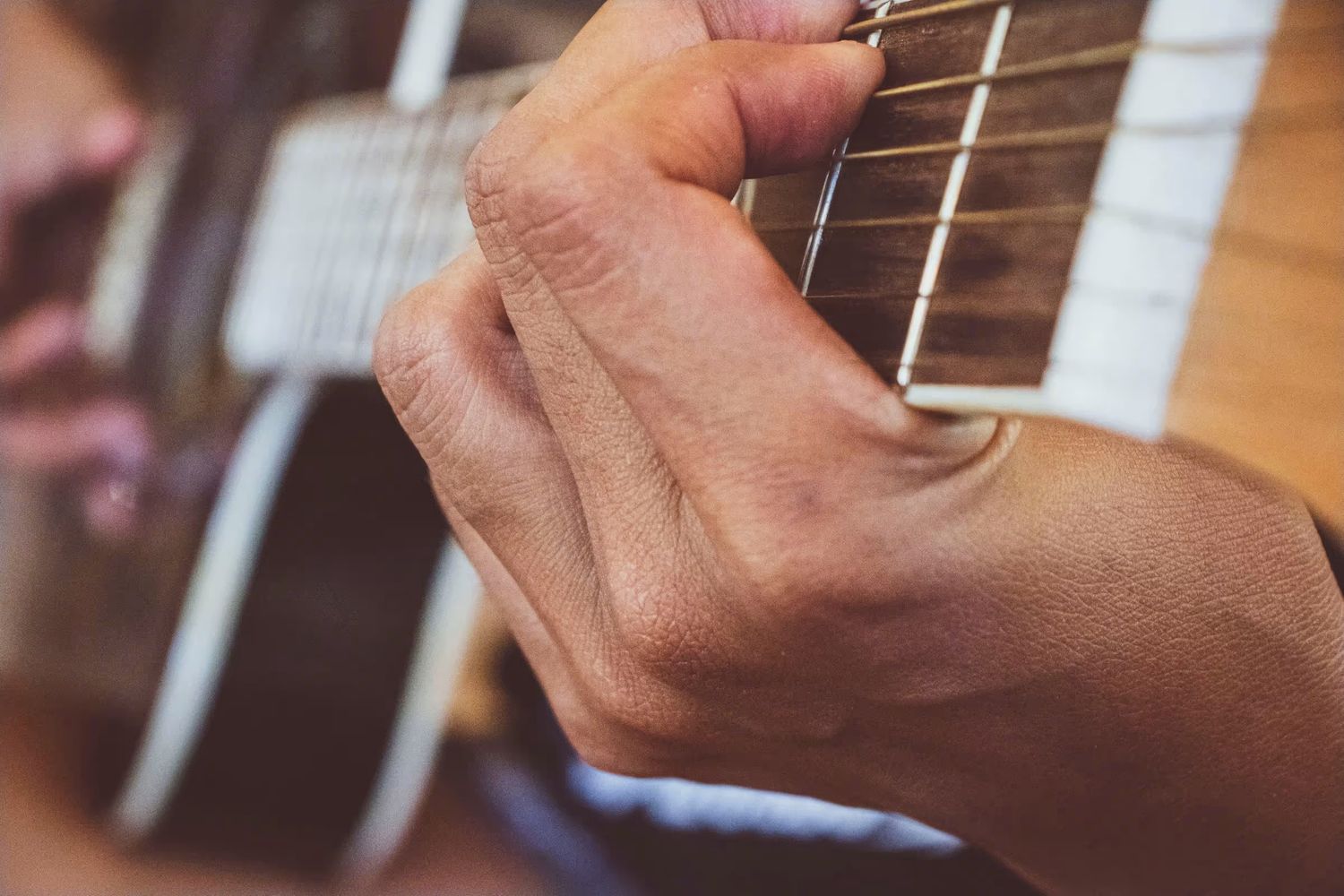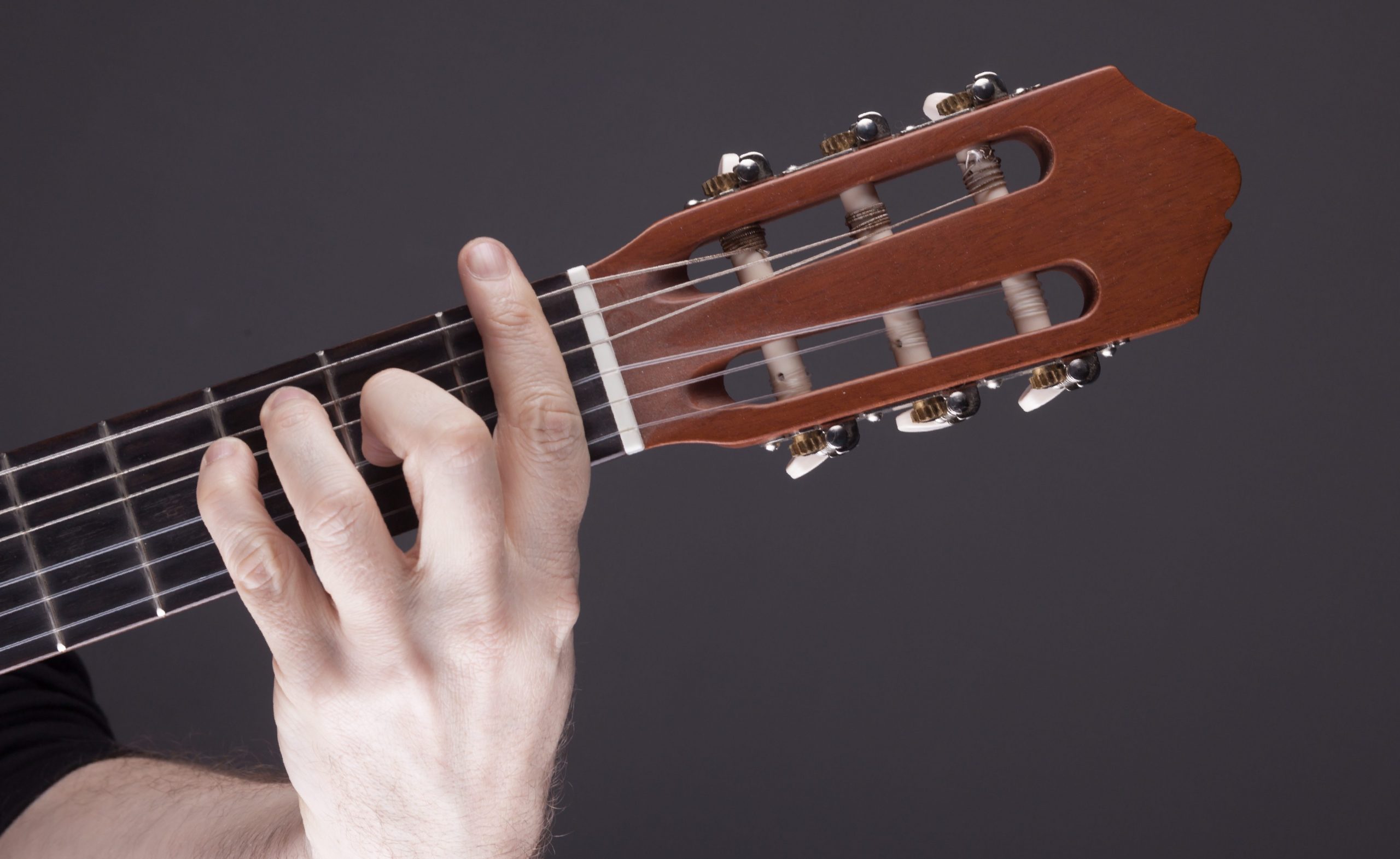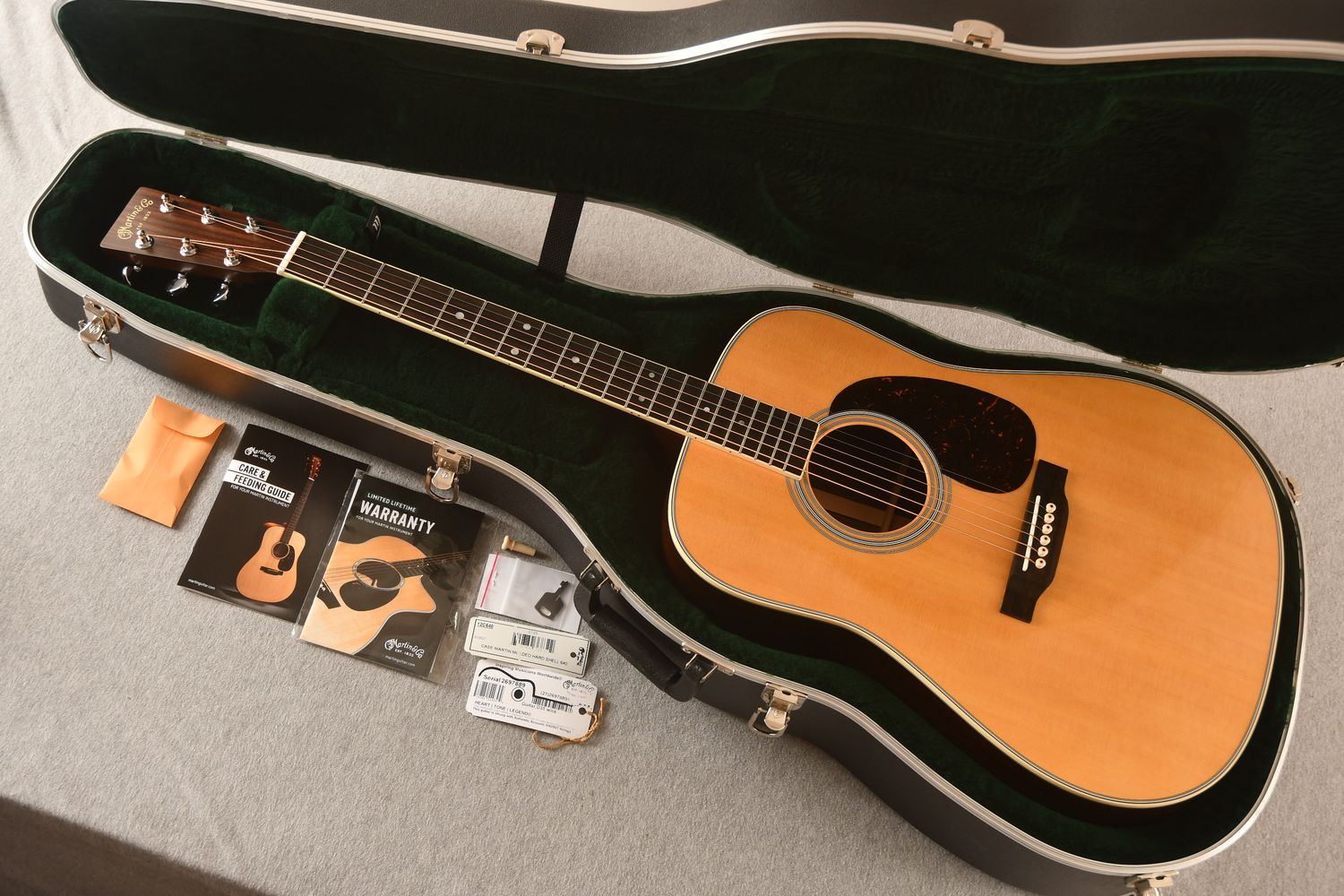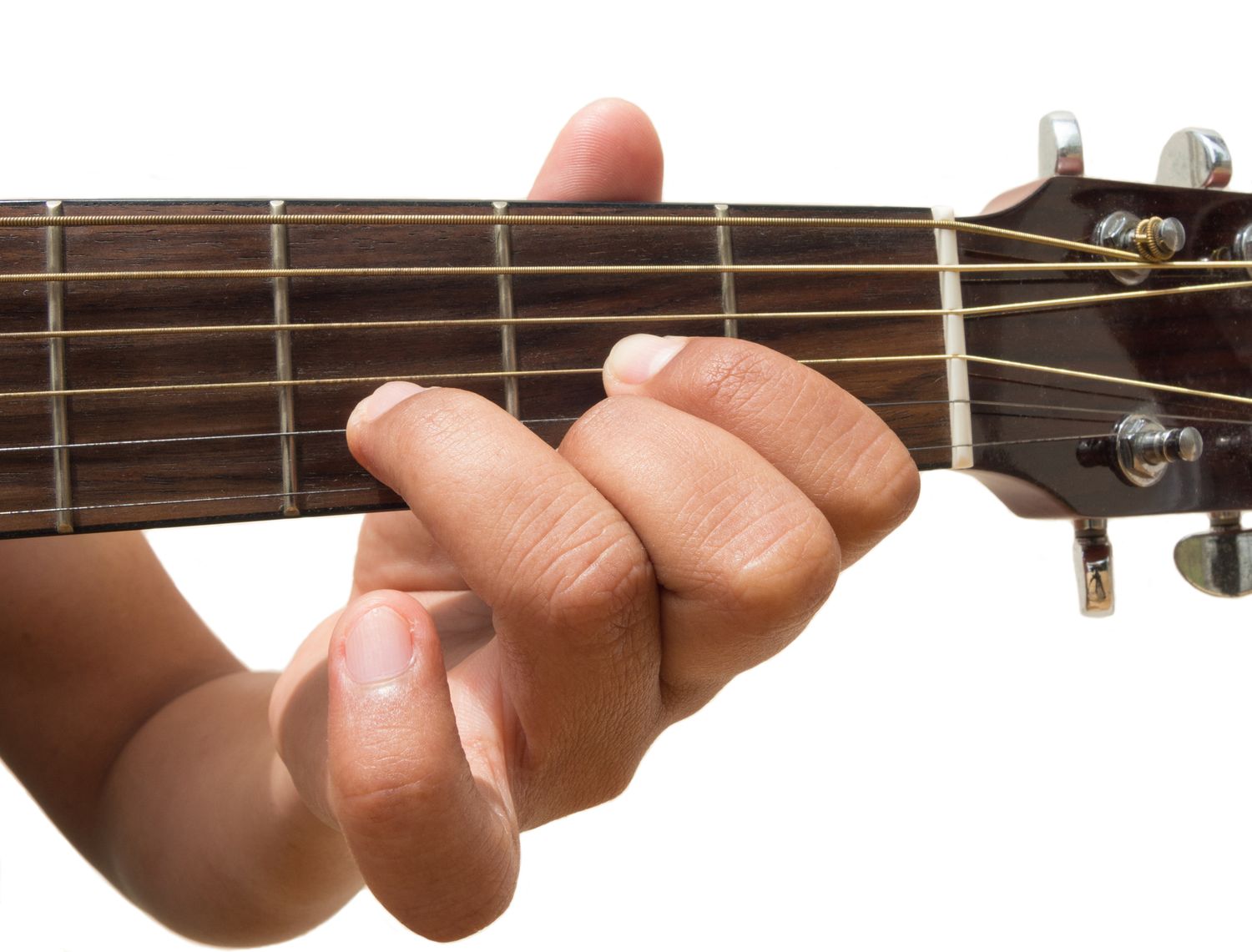Home>Production & Technology>Acoustic>What Are The Chords On An Acoustic Guitar


Acoustic
What Are The Chords On An Acoustic Guitar
Published: March 12, 2024
Learn the essential acoustic guitar chords and start playing your favorite songs today. Discover the basics of chord progressions and improve your guitar skills.
(Many of the links in this article redirect to a specific reviewed product. Your purchase of these products through affiliate links helps to generate commission for AudioLover.com, at no extra cost. Learn more)
Introduction
Acoustic guitars are beloved for their warm, resonant tones and their ability to create beautiful melodies and harmonies. One of the fundamental aspects of playing the acoustic guitar is understanding and mastering various chords. Whether you're a beginner picking up the guitar for the first time or an experienced player looking to expand your repertoire, delving into the world of acoustic guitar chords is an essential journey.
Understanding chords is like unlocking the secret code to playing countless songs across different genres. Each chord is a unique combination of notes that creates a specific sound and feeling. From the melancholic strumming of a minor chord to the uplifting resonance of a major chord, each one has its own emotional impact on the listener.
As you embark on your acoustic guitar journey, you'll encounter different types of chords, each with its own distinct characteristics and playing techniques. From basic open chords to more complex barre chords, the world of acoustic guitar chords is rich and diverse, offering a myriad of possibilities for musical expression.
In this comprehensive guide, we will explore the various types of chords on an acoustic guitar, providing insights into their structures, finger placements, and practical tips for mastering them. Whether you aspire to play soulful ballads, energetic folk tunes, or timeless rock classics, understanding and mastering acoustic guitar chords will be a pivotal step in your musical odyssey. So, grab your guitar, tune the strings, and let's dive into the enchanting realm of acoustic guitar chords.
Basic Chords
Basic chords form the foundation of acoustic guitar playing, serving as the building blocks for countless songs. These chords are often the first ones that aspiring guitarists learn, and they provide a solid starting point for mastering the instrument. The beauty of basic chords lies in their simplicity and versatility, making them essential for players of all levels.
Major Chords
Major chords are characterized by their bright, uplifting sound, making them a staple in various musical genres. The structure of a major chord consists of the root note, the major third, and the perfect fifth. For example, the C major chord, often one of the first chords beginners learn, is formed by placing fingers on the third fret of the A string, second fret of the D string, and first fret of the B string.
Minor Chords
In contrast to major chords, minor chords evoke a sense of melancholy and introspection. They are constructed with a root note, a minor third, and a perfect fifth. The A minor chord, a fundamental chord for many songs, is created by placing fingers on the second fret of the D string and the second fret of the G string. Mastering minor chords adds depth and emotion to your playing, allowing you to convey a range of feelings through your music.
Dominant 7th Chords
Dominant 7th chords introduce a bluesy, soulful flavor to your guitar playing. These chords consist of a root note, major third, perfect fifth, and minor seventh. The G7 chord, a popular dominant 7th chord, is formed by placing fingers on the second fret of the A string, first fret of the high E string, and the third fret of the high E string. Incorporating dominant 7th chords into your repertoire can infuse your music with a distinct, expressive quality.
Suspended Chords
Suspended chords, often denoted as sus2 or sus4, create a sense of tension and release in music. The suspended 2nd chord, such as Dsus2, involves playing the root note, the major second, and the perfect fifth. Meanwhile, the suspended 4th chord, like Asus4, features the root note, the perfect fourth, and the perfect fifth. These chords add a touch of intrigue and color to your compositions, offering a unique sonic palette for creative expression.
Mastering basic chords lays a strong foundation for your acoustic guitar journey, enabling you to play a wide range of songs and develop your own musical style. As you become familiar with these fundamental chords, you'll gain confidence in your playing and open the door to more advanced techniques and chord progressions. So, grab your guitar and start exploring the enchanting world of basic acoustic guitar chords.
Barre Chords
Barre chords, also known as bar chords, are essential for expanding your harmonic repertoire and unlocking a world of musical possibilities on the acoustic guitar. These versatile chords allow you to play the same chord shape in different positions on the fretboard, providing a rich, full-bodied sound that adds depth to your playing.
The hallmark of barre chords is the use of a barring finger to fret multiple strings across the fretboard. This technique enables you to move chord shapes up and down the neck, creating a diverse array of chords without changing the formation. While mastering barre chords may initially present a challenge, the payoff is immense, as they open the door to playing complex and expressive chord progressions.
One of the most common barre chords is the F major chord, formed by barring the first fret with your index finger and creating the E major shape on the remaining strings. This foundational barre chord shape serves as a gateway to mastering other barre chords across the fretboard. As you progress, you'll discover barre chord variations, including minor, dominant 7th, and major 7th shapes, each offering its own unique tonal qualities.
Barre chords are often denoted by the fret at which the index finger forms the bar. For instance, the B minor barre chord at the 7th fret utilizes the E minor shape, allowing you to play a minor chord with a rich, resonant sound. The ability to transpose chord shapes using barre chords empowers you to play in different keys and explore diverse musical styles with confidence and fluidity.
While mastering barre chords requires finger strength and dexterity, the rewards are well worth the effort. As you become proficient in navigating the fretboard with barre chords, you'll notice a significant expansion in your playing capabilities, allowing you to tackle more complex songs and create captivating chord progressions.
Incorporating barre chords into your acoustic guitar repertoire adds depth and versatility to your playing, enabling you to infuse your music with a broader range of emotions and dynamics. As you delve into the world of barre chords, embrace the challenge, and relish the opportunity to elevate your musical expression through these powerful and transformative chord shapes.
Open Chords
Open chords are foundational to acoustic guitar playing, offering a gateway to the rich and melodic world of chord progressions. These chords are characterized by their open strings, which contribute to their resonant and vibrant sound. As a beginner, mastering open chords is a crucial step in developing your guitar skills and understanding the harmonic structure of songs across various genres.
Embracing the Fundamental Shapes
Open chords encompass familiar shapes such as C, G, D, E, and A, each with its own distinct finger placement and tonal quality. The C major chord, for example, is formed by placing fingers on the first fret of the B string and the second fret of the D string, creating a bright and uplifting sound that resonates with clarity. Similarly, the G major chord introduces a rich, full-bodied tone, achieved by positioning fingers on the third fret of the high E string, the second fret of the A string, and the third fret of the low E string.
Versatility and Musical Expression
What makes open chords particularly appealing is their versatility and adaptability across different musical styles. Whether you're strumming folk tunes, playing soulful ballads, or rocking out to classic hits, open chords provide a solid foundation for expressing a wide range of emotions through your music. The E major chord, with its open, ringing strings, infuses compositions with a sense of openness and grandeur, while the A minor chord adds depth and introspection to your sonic palette.
Transitioning and Progressions
Mastering open chords involves honing your ability to transition smoothly between different chord shapes. This fluidity is essential for playing songs with seamless chord progressions, allowing you to create captivating melodies and harmonies. As you practice transitioning from a D major chord to an A major chord, for instance, you'll develop agility and precision in your fretting hand, enhancing your overall playing proficiency.
Unlocking Creativity
Beyond their technical aspects, open chords serve as a canvas for creativity and musical exploration. Experimenting with embellishments and variations within open chord shapes can add flair and individuality to your playing, enabling you to personalize songs and develop your unique musical style. Whether it's adding a suspended note to a G major chord or incorporating melodic embellishments within a D major progression, open chords offer endless opportunities for artistic expression.
Embracing the Journey
As you delve into the enchanting realm of open chords, embrace the journey of discovery and growth. Patience and consistent practice will enhance your command of these foundational chords, empowering you to play a diverse repertoire of songs with confidence and artistry. Whether you're strumming around a campfire, performing on stage, or simply enjoying the meditative joy of playing at home, open chords will remain an integral part of your acoustic guitar journey, enriching your musical experience with their timeless resonance and expressive potential.
Power Chords
Power chords are a staple in the arsenal of every guitarist, renowned for their raw energy and versatility across various musical genres. These chords, consisting of a root note and its fifth, omit the third interval found in major and minor chords. This omission results in a chord that exudes a robust, edgy sound, making it a favorite in rock, punk, and metal music.
The structure of a power chord is defined by its simplicity and potency. Typically played with two or three notes, power chords are movable shapes that can be positioned anywhere on the fretboard, allowing for seamless transitions between different keys and tonalities. The absence of the third interval in power chords contributes to their neutral, ambiguous quality, making them adaptable to a wide range of musical contexts.
One of the defining characteristics of power chords is their ability to convey a sense of raw power and intensity. The absence of the third interval eliminates the distinction between major and minor tonalities, resulting in a chord that resonates with a forceful, assertive quality. This sonic impact makes power chords an essential component of high-energy, distortion-laden guitar riffs and aggressive, hard-hitting musical passages.
The versatility of power chords extends beyond their role in driving rhythm guitar parts. These chords are also integral to creating harmonically rich and sonically dense compositions. When combined with amplification and effects, power chords produce a wall of sound that fills the sonic spectrum with a commanding presence, making them a cornerstone of the rock and metal guitar sound.
Mastering power chords involves developing precision in fretting hand technique and cultivating a keen ear for tonal balance and dynamics. As you navigate the fretboard, experimenting with different power chord shapes and voicings, you'll discover the immense potential for crafting compelling guitar arrangements and unleashing a torrent of sonic energy.
Incorporating power chords into your acoustic guitar repertoire empowers you to infuse your music with a visceral, electrifying edge, adding depth and intensity to your playing. Whether you're unleashing thunderous riffs, crafting anthemic chord progressions, or exploring the sonic extremes of your instrument, power chords stand as a testament to the electrifying force of music and the boundless creativity it inspires.
Conclusion
In conclusion, the world of acoustic guitar chords is a captivating tapestry of musical expression, offering a rich array of tones, emotions, and creative possibilities. From the foundational simplicity of basic chords to the dynamic versatility of barre chords, open chords, and power chords, each chord type contributes to the intricate language of music, enabling guitarists to convey a myriad of feelings and stories through their playing.
As aspiring and seasoned guitarists alike embark on their musical journeys, understanding and mastering acoustic guitar chords serves as a gateway to unlocking the boundless potential of the instrument. The journey of learning and honing chords is not merely a technical pursuit but a deeply personal and artistic endeavor, allowing individuals to weave their unique narratives and emotions into the fabric of their music.
The foundational nature of basic chords lays the groundwork for musical exploration, providing a solid platform for beginners to build their skills and for experienced players to revisit the timeless essence of chordal harmony. Barre chords, with their technical demands and expansive sonic range, offer a gateway to navigating the fretboard with confidence and creativity, while open chords beckon with their melodic resonance and adaptability across diverse musical genres.
Furthermore, the raw power and sonic impact of power chords add a compelling dimension to the guitarist's toolkit, infusing compositions with an electrifying edge and commanding presence. Each chord type contributes to the guitarist's sonic palette, offering a spectrum of tonal colors and textures to paint musical landscapes that resonate with audiences and fellow musicians alike.
As guitarists delve into the enchanting realm of acoustic guitar chords, they embark on a journey of self-discovery, artistic growth, and boundless creativity. Whether strumming soulful ballads, crafting anthemic rock riffs, or exploring the expressive nuances of folk and blues, the mastery of chords opens doors to endless musical horizons.
In the end, the world of acoustic guitar chords transcends technical proficiency, inviting players to imbue their music with their unique essence and connect with listeners on a profound emotional level. As the strings resonate and the chords ring out, the language of music comes alive, weaving a tapestry of human experience, passion, and creativity that transcends the boundaries of time and space.
So, as you pick up your acoustic guitar and embark on your chordal odyssey, remember that each strum and fret is an opportunity to tell your story, share your emotions, and create moments of beauty and connection through the timeless language of acoustic guitar chords.




